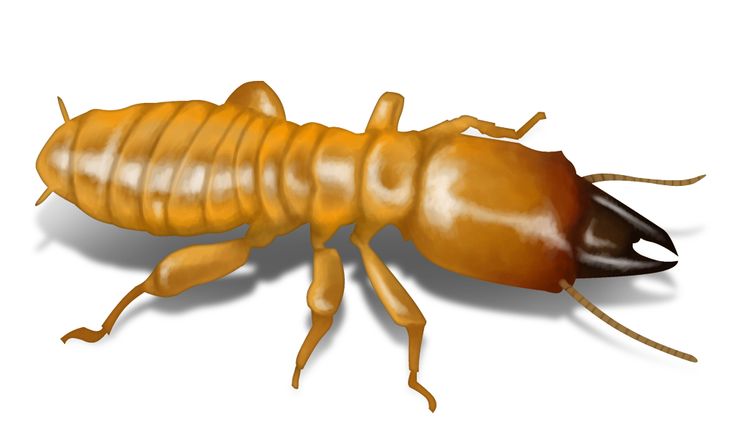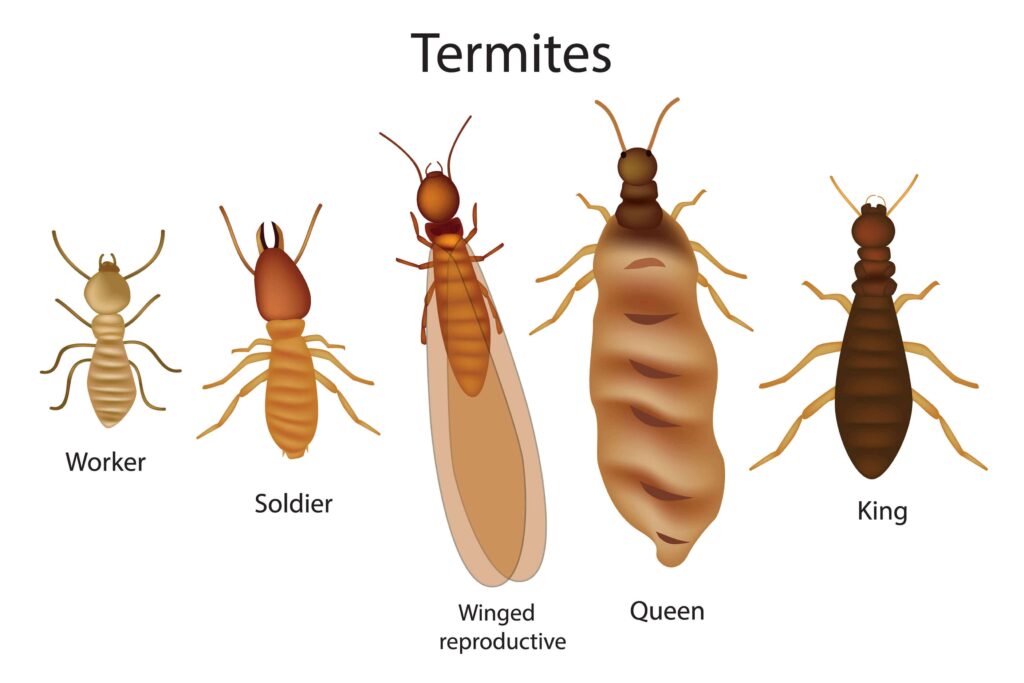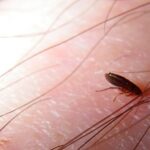Understanding what do termites look like is crucial for homeowners and property managers alike. Termites can cause significant damage if left unchecked, making early identification and intervention essential. In this guide, we will explore the appearance of termites, their different types, and how to recognize them to prevent and manage infestations effectively.
What Do Termites Look Like?
Termites are small insects that can be difficult to spot due to their size and color. Knowing what to look for can help you identify these pests early and take action to protect your property.
1. General Appearance
- Size: Termites vary in size depending on their caste. Worker termites are typically 1/4 to 1/2 inch long, while soldier termites are slightly larger, and winged reproductive termites (alates) can be up to 1 inch long.
- Color: The color of termites varies with their caste. Workers and soldiers are usually pale, ranging from white to light brown. Alates, or winged termites, are darker, often brownish or black.
- Body Shape: Termites have soft, cylindrical bodies with a uniform width. They lack the constricted waist that is typical of ants.
2. Winged Termites (Alates)
- Appearance: Winged termites are the reproductive caste of the colony. They have two pairs of wings that are of equal size, unlike ants, which have wings of different sizes. The wings are translucent and may have a smoky or grayish tint.
- Flight: Winged termites are often seen swarming during certain times of the year, typically in warm, humid conditions. This is when they leave their nest to find a mate and establish new colonies.
3. Worker Termites
- Appearance: Worker termites are the most common caste and are responsible for foraging for food and maintaining the colony. They have soft, pale bodies and are the smallest of the three main castes.
- Function: Their main job is to eat wood and other cellulose materials, which can lead to significant structural damage over time.
4. Soldier Termites
- Appearance: Soldier termites have larger heads and strong jaws (mandibles) used for defense. They are usually larger than worker termites and have a darker, more robust appearance.
- Function: Their primary role is to protect the colony from predators, such as ants.
Identifying Termites Versus Ants
It’s common to confuse termites with ants, as both can be found in similar environments. Here’s how you can tell them apart:
1. Body Structure
- Termites: Termites have a uniform body width from head to tail and a soft, smooth body. Their legs are straight and not bent.
- Ants: Ants have a pinched waist between the thorax and abdomen, giving them a segmented appearance. Their bodies are harder and more rounded.
2. Wings
- Termites: Winged termites have two pairs of wings that are the same size and shape. The wings are translucent and may appear slightly smoky.
- Ants: Winged ants have two pairs of wings, but the front wings are larger than the hind wings. The wings are often more opaque and have a different texture.
3. Behavior
- Termites: Termites are typically found in wood, soil, or other cellulose materials. They may be seen eating through wooden structures or creating mud tubes on walls.
- Ants: Ants are often found in visible trails, foraging for food. They are more likely to be seen in open areas, not just on or in wooden structures.

Signs of a Termite Infestation
Detecting termites early can prevent significant damage. Look for these signs:
1. Mud Tubes
Termites build mud tubes to travel between their nests and food sources. These tubes are usually found along walls, foundations, and in crawl spaces.
2. Wood Damage
Check for hollowed or damaged wood. Termites eat wood from the inside out, so infested wood may sound hollow when tapped.
3. Swarms
Seeing winged termites (alates) swarming around your home is a clear sign of an infestation. They usually swarm in the spring or early summer, especially after a rain.
4. Frass (Termite Droppings)
Drywood termites leave behind small, pellet-like droppings known as frass. These can be found near infested wood.
How to Prevent and Control Termites
Effective termite control involves several steps to prevent and manage infestations:
1. Regular Inspections
Conduct regular inspections of your home, especially areas prone to moisture and wood damage. Early detection can prevent significant damage.
2. Moisture Control
Keep moisture levels low by repairing leaks and ensuring proper drainage around your home. Termites thrive in moist environments.
3. Wood Treatment
Treat wood with termite-resistant chemicals to deter termites from feeding on it. This is particularly important for wood in contact with the soil.
4. Professional Treatment
If you suspect a termite infestation, contact a pest control professional. They can conduct a thorough inspection and recommend appropriate treatments, such as bait systems or liquid termiticides.
5. Reduce Wood-to-Soil Contact
Minimize contact between wood and soil around your home. Use concrete or metal barriers to prevent termites from accessing wood structures.

Conclusion
Understanding what do termites look like is essential for identifying and managing these destructive pests. By recognizing their appearance, differentiating them from ants, and being aware of the signs of an infestation, you can take proactive steps to protect your home. Regular inspections, moisture control, and professional treatments are key to preventing and managing termite problems effectively.



